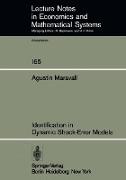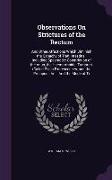Identification in Dynamic Shock-Error Models
BücherAngebote / Angebote:
Looking at a very simple example of an error-in-variables model, I was surprised at the effect that standard dynamic features (in the form of autocorre 11 lation. in the variables) could have on the state of identification of the model. It became apparent that identification of error-in-variables models was less of a problem when some dynamic features were present, and that the cathegory of "pre determined variables" was meaningless, since lagged endogenous and truly exogenous variables had very different identification properties. Also, for'the models I was considering, both necessary and sufficient conditions for identification could be expressed as simple counting rules, trivial to compute. These results seemed somewhat striking in the context of traditional econometrics literature, and p- vided the original motivation for this monograph. The monograph, therefore, atempts to analyze econometric identification of models when the variables are measured with error and when dynamic features are present. In trying to generalize the examples I was considering, although the final results had very simple expressions, the process of formally proving them became cumbersome and lengthy (in particular for the "sufficiency" part of the proofs). Possibly this was also due to a lack of more high-powered analytical tools and/or more elegant derivations, for which I feel an apology coul be appropiate. With some minor modifications, this monograph is a Ph. D. dissertation presented to the Department of Economics of the University of Wisconsin, Madison. Thanks are due to. Dennis J. Aigner and Arthur S.
Folgt in ca. 10 Arbeitstagen



